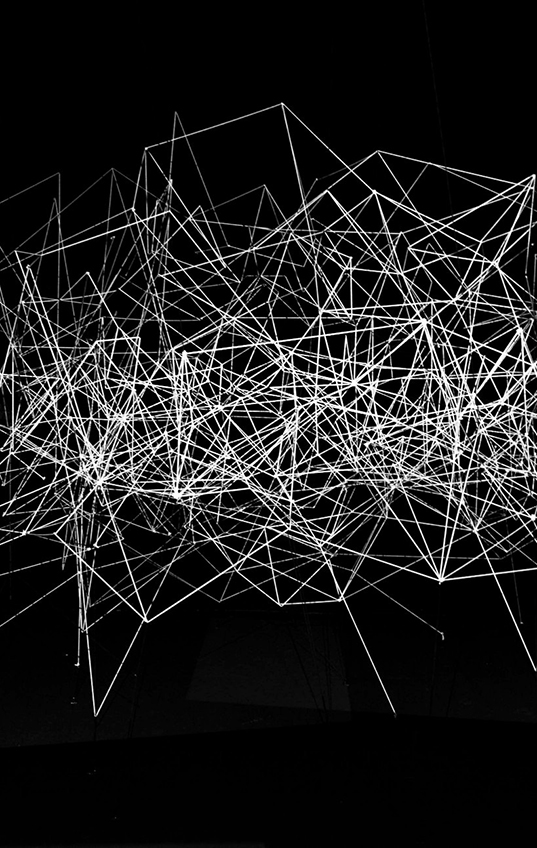
ANOUK WIPPRECHT AND ADUEN DARRIBA
Smoke Dress
Fellow designer, Valerie Lamontagne, writes: “SMOKE DRESS is a collaboration between fashiontech designer Anouk Wipprecht [NL] and technologist Aduen Darriba [NL]. The dress is a wireless and wearable tangible couture “smoke screen” imbued with the ability to suddenly visually obliterate itself through the excretion of a cloud of smoke. Ambient clouds of smoke are created when the dress detects a visitor approaching, thus camouflaging itself within it’s own materiality. The SMOKE DRESS, with its loose net of metallic threads and electrical wire, works at the scale of the magical illusionists trick, permitting a hypothetical magician’s assistant to perform her own disappearing act.






